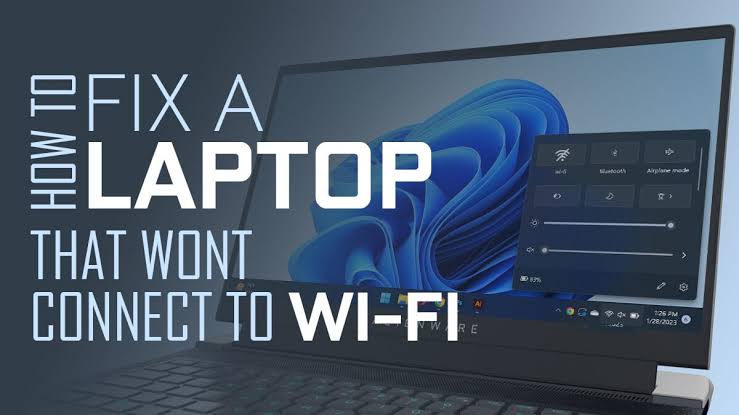Networking and Wi-Fi connectivity have fundamentally redefined the use of laptops and PCs, turning them into powerful tools for communication, productivity, entertainment, and education. Advances such as Wi-Fi 6, Wi-Fi 7, and 5G have eliminated many of the limitations once associated with wireless technology, enabling seamless digital experiences.
Networking and Wi-Fi connectivity have become the backbone of modern computing, shaping how laptops and PCs are used in personal, professional, and educational contexts. As of 2025, the demand for seamless connectivity has never been greater, with high-speed internet access powering everything from cloud computing to artificial intelligence applications. The evolution of networking technologies has transformed laptops and PCs from standalone devices into dynamic hubs of productivity, entertainment, and communication. Understanding the impact of networking and Wi-Fi on these systems highlights how essential connectivity has become in today’s digital landscape.
The evolution of networking in laptops and PCs
Early personal computers were largely offline machines, relying on floppy disks or CDs for data transfer. The introduction of Ethernet and dial-up connections initiated the networking era, enabling file sharing and internet access. Wi-Fi, first standardized in the late 1990s, marked a turning point by offering wireless freedom, eliminating the need for physical cables.
Today’s laptops and PCs benefit from Wi-Fi 6 and Wi-Fi 6E, which provide faster speeds, lower latency, and more stable connections. The arrival of Wi-Fi 7 in 2024 further improved bandwidth, reaching multi-gigabit speeds capable of handling advanced applications such as real-time gaming, 8K video streaming, and immersive VR environments. These advances have elevated user expectations, making high-speed connectivity a fundamental feature rather than a luxury.
Enhancing productivity and collaboration
Networking and Wi-Fi connectivity have transformed how individuals and businesses operate. Cloud computing platforms like Microsoft 365, Google Workspace, and countless SaaS applications rely on continuous connectivity for real-time updates and collaboration. With stable Wi-Fi, teams can work simultaneously on shared documents, communicate through video conferencing, and access remote servers without interruption.
Remote work, which expanded significantly after the global shift in workplace culture post-2020, has become a permanent part of modern employment. Laptops and PCs now serve as mobile offices, powered by reliable Wi-Fi that enables employees to remain productive from virtually anywhere. Networking advancements have thus directly influenced the efficiency, flexibility, and inclusivity of the workforce.
The role of Wi-Fi in education and learning
In education, networking and Wi-Fi have revolutionized teaching and learning. Online courses, virtual classrooms, and remote assessments depend on stable connectivity. Students and educators now use laptops as portals to global knowledge, participating in interactive lessons, accessing cloud-based libraries, and collaborating across borders.
Wi-Fi has also enhanced research opportunities by providing instant access to online journals, data repositories, and AI-driven learning platforms. In 2025, with the rise of hybrid education, laptops and PCs connected via high-speed networks are indispensable in bridging the gap between traditional classrooms and digital learning environments.
Impact on entertainment and gaming
Wi-Fi has become a cornerstone of digital entertainment. Streaming platforms such as Netflix, Disney+, and Spotify rely on stable connectivity to deliver seamless, high-definition content. The shift from downloading media to streaming it in real time reflects the importance of high-bandwidth networking.
Gaming, in particular, has been reshaped by Wi-Fi advancements. Online multiplayer platforms, cloud gaming services, and virtual reality experiences depend on low-latency connections. Wi-Fi 6 and Wi-Fi 7 reduce lag significantly, providing smoother gameplay and enabling competitive eSports on laptops and PCs without the need for wired Ethernet connections. This has expanded the accessibility of high-quality gaming experiences to broader audiences.
Integration with smart ecosystems
Networking has also connected laptops and PCs to broader smart ecosystems. Devices can now sync seamlessly with smartphones, smart TVs, IoT-enabled home appliances, and even wearables through shared Wi-Fi networks. This integration allows users to share files instantly, control smart environments, and enjoy cross-device experiences.
For businesses, networking ensures that laptops and PCs can interact with servers, printers, and enterprise systems securely. Advanced Wi-Fi technologies have made it possible for offices to operate with fewer cables, reducing clutter and increasing mobility without sacrificing performance.
Cybersecurity challenges and solutions
While networking and Wi-Fi have unlocked countless opportunities, they have also introduced new security challenges. Laptops and PCs connected to public Wi-Fi networks are vulnerable to cyberattacks, including data breaches, phishing, and unauthorized access. The more dependent individuals and businesses become on wireless connectivity, the higher the risk of cybersecurity incidents.
To address this, modern devices and networks now incorporate advanced security protocols such as WPA3, multi-factor authentication, and AI-driven threat detection. Virtual private networks (VPNs) and encrypted cloud services are also widely used to protect sensitive data. These measures ensure that the benefits of networking are not overshadowed by risks.
The rise of 5G and its influence
Beyond Wi-Fi, 5G connectivity has further enhanced how laptops and PCs connect to networks. Many modern laptops now feature built-in 5G modules, allowing them to access ultra-fast mobile internet without relying solely on Wi-Fi hotspots. This has empowered professionals to work efficiently while traveling, expanded the capabilities of portable devices, and bridged connectivity gaps in areas with limited Wi-Fi infrastructure.
The combination of Wi-Fi and 5G is creating a future where connectivity is nearly ubiquitous, ensuring that users always remain online regardless of their location.
Future outlook for networking and PCs
Looking ahead, networking technologies will continue to shape the role of laptops and PCs. Wi-Fi 7 and upcoming iterations promise even faster and more reliable connections, paving the way for advancements in augmented reality, artificial intelligence integration, and cloud-driven workflows.
Edge computing will also benefit, as powerful laptops connected to ultra-fast networks can process data locally while still interacting with distributed cloud resources. The rise of smart cities and IoT-enabled environments will make constant connectivity not just a convenience but a necessity.
